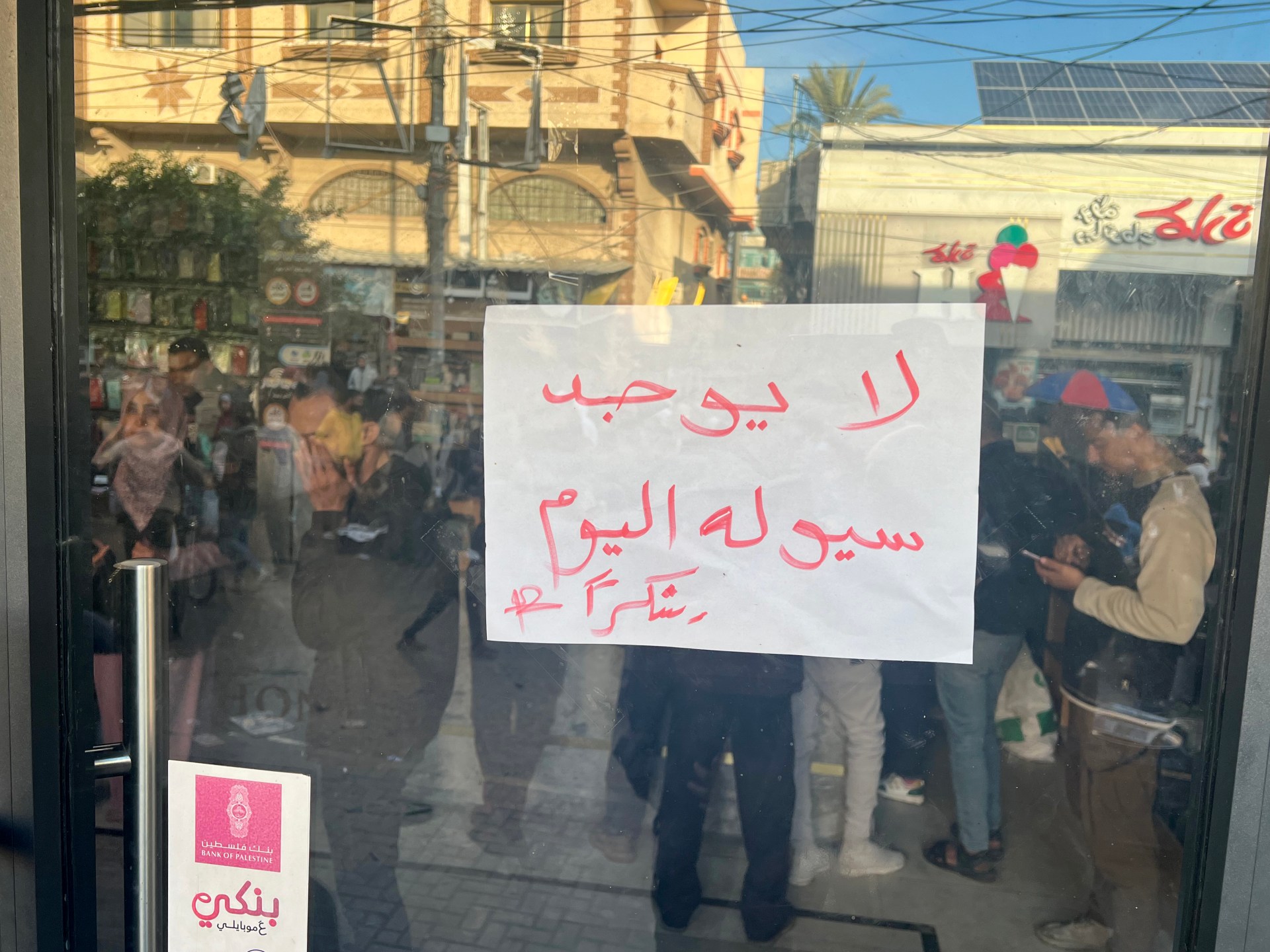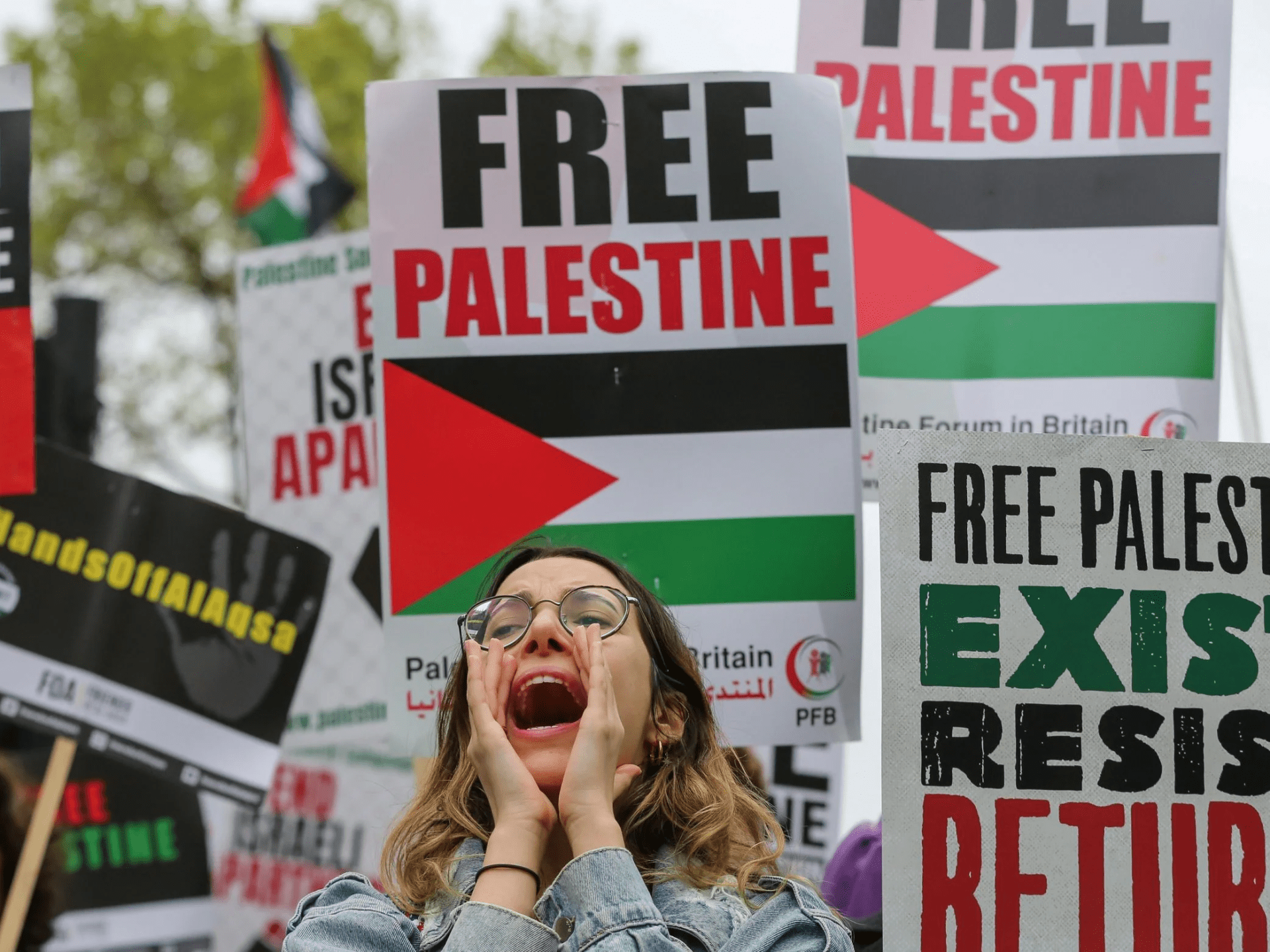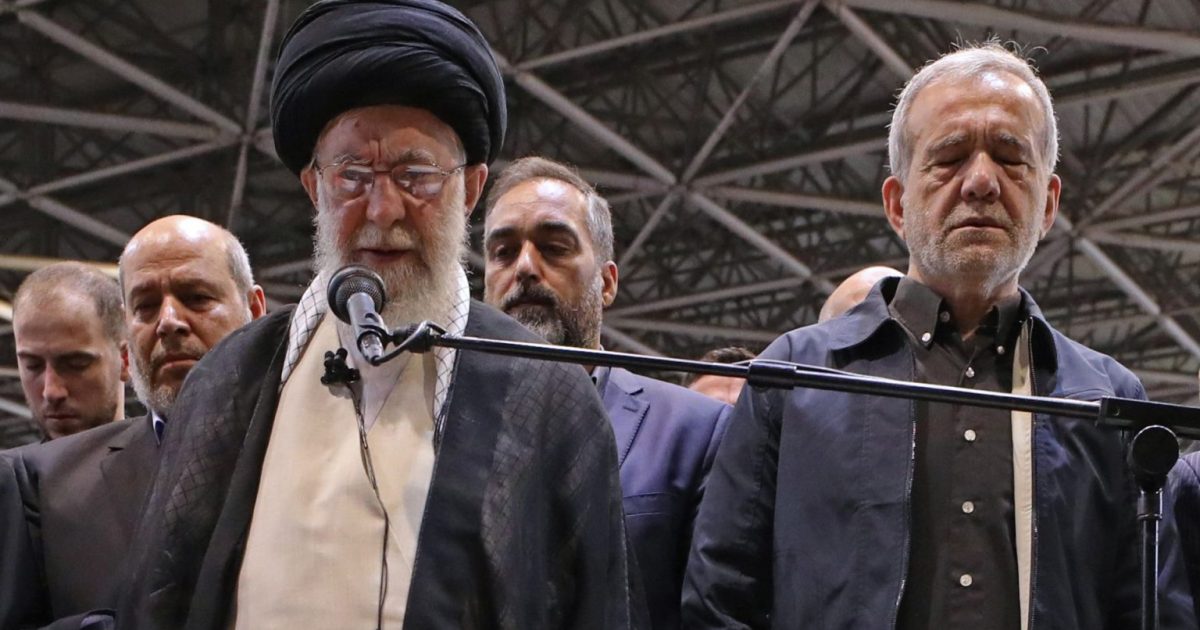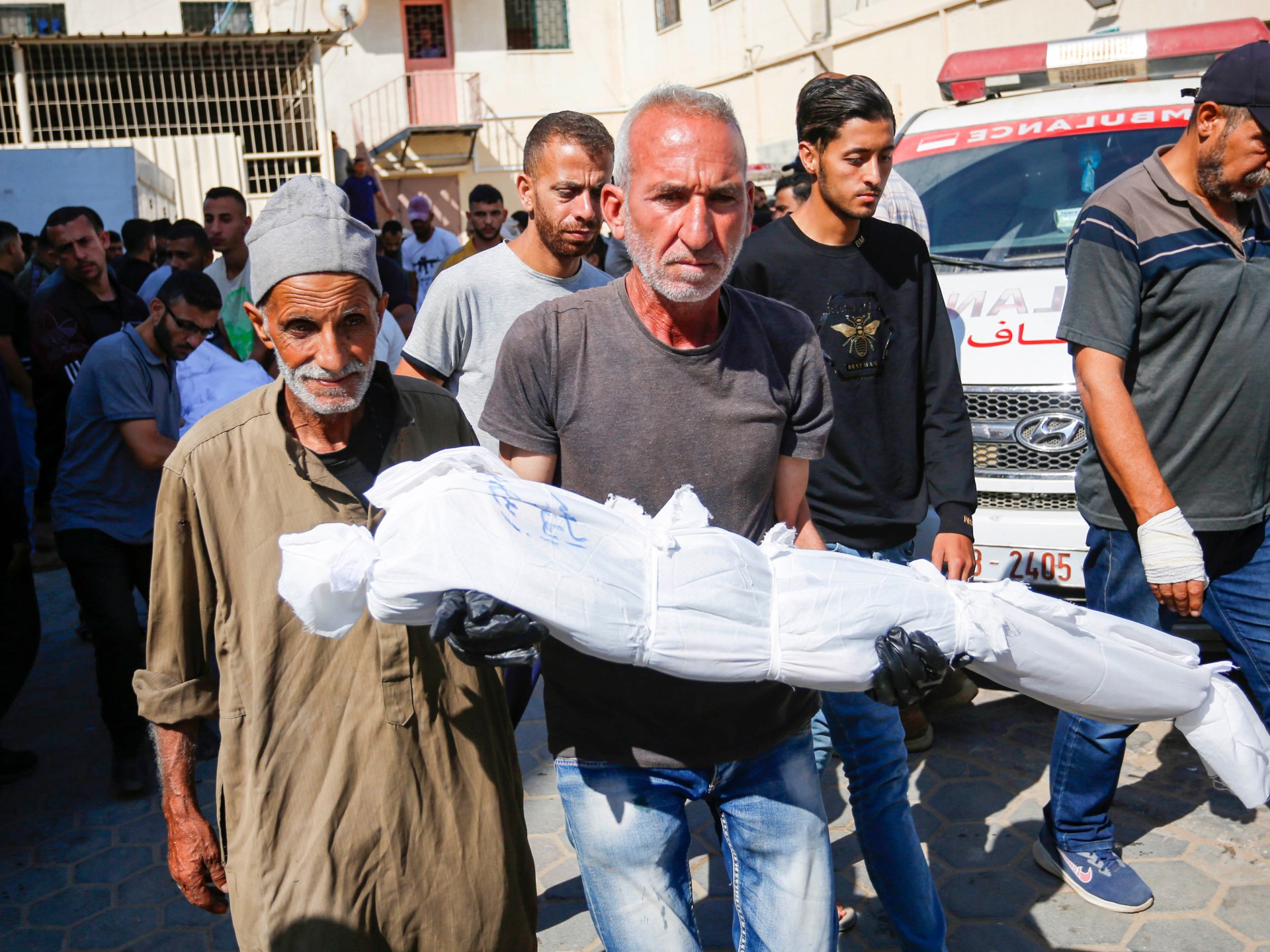Life Under Siege: Gaza’s Banking Crisis
Byline: Anonymous
Week after week, Abdullah Ismail waits in a long line under the scorching sun at a local bank ATM in central Gaza to withdraw a portion of his dwindling savings to support his young family amid the harsh conditions of the ongoing war in the Gaza Strip.
He explains to Al Jazeera that he has to repeat this process every week, avoiding carrying more cash than necessary to prevent losing it during shelling or displacement since he lives in a tent in Deir al-Balah. “Some days, I go back empty-handed because the ATM runs out of money, breaks down, or I get tired of waiting,” he says, adding that returning home without money “disappoints his children who eagerly await his arrival.”
Ismail is not alone. Gazans face immense difficulties withdrawing money from their bank accounts due to the closure of the banking system since the start of the Israeli offensive on October 7, 2023.
Since the beginning of the Israeli war on Gaza, all bank branches in the Strip have been closed, and Israeli airstrikes have destroyed many of these branches and their ATMs. Israel is preventing the entry and transfer of funds into and out of the Strip, causing a severe crisis for Gazans living under dire circumstances.
Banking System out of Service
The Palestinian Monetary Authority stated in an earlier statement that several bank branches and headquarters had been destroyed, and it has been impossible to open the remaining branches for withdrawal and deposit transactions in all areas of the Strip due to shelling, dire conditions in the field, power cuts, and security concerns.
This situation, according to the Monetary Authority’s statement, has resulted in an unprecedented cash shortage among Gazans and in the markets. The crisis has worsened with the disabling of most ATMs.
In an attempt to find alternative solutions to cash, the Palestinian Monetary Authority launched an instant payment service on May 11, 2023, using banking applications, e-wallets, and bank cards.
It also addressed the internet issue by allowing the use of mobile networks to facilitate the provision of the service.
However, internet connectivity is not the only obstacle to daily financial transactions for Gazans. After the destruction, the Strip lacks stores that could enable the use of the service, as Israel has destroyed most of the commercial markets and shops, limiting commercial activity to small-scale stalls or carts pulled by animals.
Exploitation of the Crisis
Mohammed Hammad, a Gazan working for a relief organization in Gaza City, tells Al Jazeera about his struggles with cashing his salary, which he receives from his employer. He has to pay high commissions to cash dealers to get his salary by transferring it to their bank accounts through banking applications and then receiving the cash minus the commission, which ranges from 14% to 20%. “It’s cruel. My family needs every penny. Inflation is everywhere, but there’s no other way,” he says.
Systematic Destruction
Dr. Muath Al-Amoudi, an expert in political economy, believes that the liquidity crisis is one of the harsh tools used by the Israeli occupation to suffocate the Palestinians and put pressure on the home front. This crisis also reveals the fragility of Palestinian monetary institutions and the risk of their collapse or disruption at any moment, given their dependence on and complete control by the occupation, primarily the Palestinian Monetary Authority.
Al-Amoudi explains to Al Jazeera: “Since the start of the war, Israel has imposed a strict financial blockade on the banking system in Gaza, isolating it entirely from the West Bank and the Palestinian Authority—something that could happen in the West Bank in the future—in addition to destroying the financial infrastructure in the Strip, including exchange offices and banks. There are only a few branches left operating in central Gaza, which are not enough to meet people’s needs.”
According to Al-Amoudi, the idea of disruption is the most dangerous. Occupation aircraft previously destroyed most of the Palestinian Authority’s headquarters at the beginning of the Al-Aqsa Intifada in 2000. Now, they are disrupting financial institutions to crush the people of Gaza and deprive them of accessing their money in banks.
Al-Amoudi is not surprised by the speed at which the Palestinian banking system in the Strip was disrupted. Everything since the Oslo Accords has been primarily tied to “Israel’s security needs,” and this fragility is part of a difficult equation that Palestinians face, considering the occupation’s security as the key to everything. This new phase of the siege, despite violating all international laws, has deprived commercial markets of cash because citizens cannot withdraw their money, intensifying the economic pressure on the Palestinian people.
He points to the multifaceted and far-reaching effects of the monetary blockade. Preventing the flow of money into Gaza has severely damaged most paper and metal currencies. The absence of replacement for damaged banknotes has crippled the financial system in the besieged Strip, suffocating its people within cycles of economic deterioration that are hard to break. While Palestinian banks are subject to the supervision of the Palestinian Monetary Authority, they remain largely under the control of the Central Bank of Israel, according to the Paris Economic Framework signed in 1994. The Israeli shekel remains the primary currency in Palestine, meaning that the occupation controls the financial and economic scene in Palestine from the outset, and talk of independent Palestinian institutions is an illusion without ending dependence on the occupation and the Palestinian Authority’s control over crossings, borders, and banks.
According to the Palestinian Banks Association based in Ramallah, 56 branches and 92 ATMs belonging to various banks operating in the Palestinian territories are located in the Strip. To date, there are no precise statistics on the extent of destruction caused by the war.
Since October 7, 2023, Israel, backed by the United States, has been waging a devastating military campaign against Gaza, resulting in catastrophic human losses. Over 40,000 Palestinians have been killed, and more than 90,000 have been injured, mostly women and children. Additionally, over 10,000 people remain missing amid widespread destruction and deadly famine across the area.
Despite escalating international protests, Israel continues its military operations, ignoring the UN Security Council resolution calling for an immediate ceasefire. Israel has also disregarded the orders of the International Court of Justice, which demanded that it take urgent measures to prevent genocide and improve the deteriorating humanitarian conditions faced by civilians in Gaza.
This ongoing war has left Gaza in a state of profound devastation, with its people suffering immensely. As the international community remains divided, despite clear calls for intervention and humanitarian assistance, conditions on the ground are worsening, with no end in sight.



